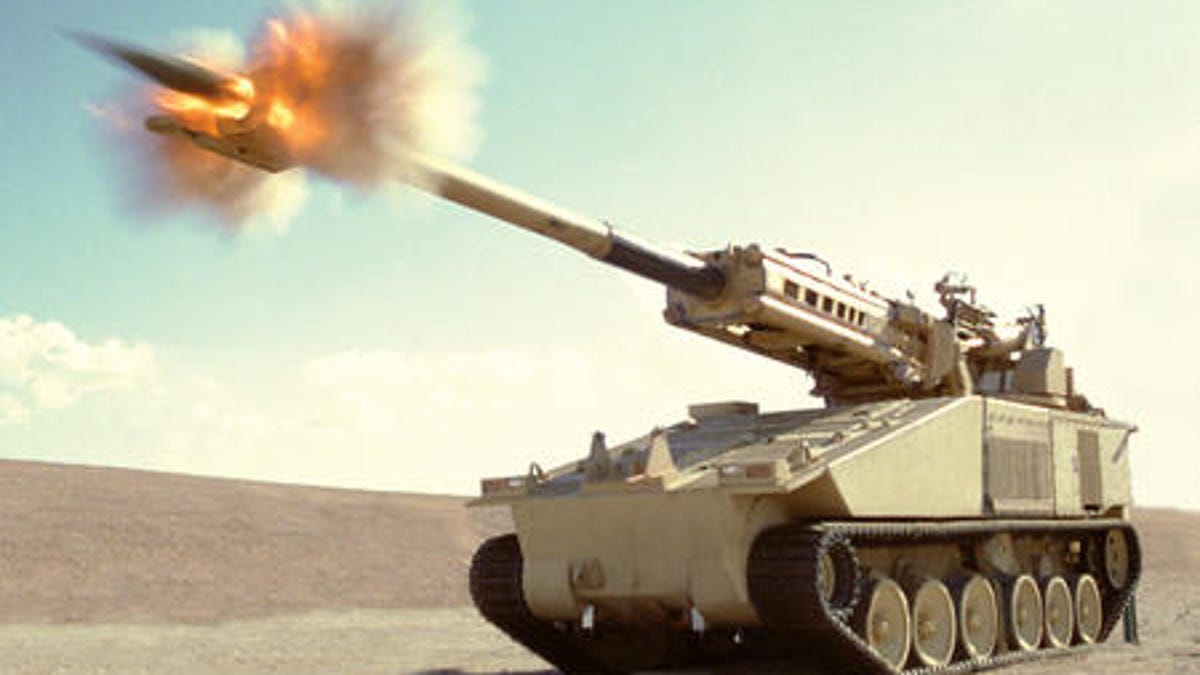'Future combat' cannon makes D.C. road trip
The Army plans a public showing engine next week on Capitol Hill of a high-tech howitzer with a hybrid diesel-electric engine system.

For components of the Army's $160 billion Future Combat Systems program, two key rites of passage are field trials at a military base in the West and a field trip back East to Capitol Hill.
Next week, the Army will bring prototype 1 of the Non Line of Sight Cannon, or NLOS-C, to the National Mall in Washington, D.C., just in front of the Capitol, for its public debut. The NLOS-C is one of eight different manned vehicles in the still evolving FCS plan. All of them will share a common (if not identical) chassis.
The FCS vehicles are notable in part because they're designed to use a hybrid diesel-electric engine system. An electric motor drives the tracks that propel the vehicle, as well as run all internal systems, drawing power from batteries charged by the diesel engine.
The NLOS-C junket to D.C. on June 11 follows a May demonstration on Capitol Hill of some other FCS components, including unattended ground sensors, that are part of what the Army refers to as "Spin Out 1." Given that the FCS road map spans the better part of two decades, with full operational capacity for the whole shebang planned for the far-off 2017, the Army has begun work to get discrete elements out to the field faster.
Lawmakers in Washington regularly get treated to displays of big-budget projects in development as project backers seek to justify a continuing flow of federal funds. The vastness--and vast expense--of Future Combat Systems has made that program particularly susceptible to criticism and to the threat of cutbacks.
"Sustaining support for the program over these next two critical years, I think, is probably our greatest challenge," Gen. George Casey, the Army chief of staff, told Defense News in a story published Monday. "That is why it is important that the real capability is coming out now. It allows us to show that what we have been working on for the last decade is starting to bear fruit."
The Army plans to deliver the first of the NLOS-C prototypes to the Yuma Proving Grounds in Arizona by December, with four more arriving there by early 2009 and then three more (for a total of eight) later in the year. Work at Yuma will include mobility, safety, reliability, and gun-firing tests. The main gun on the system is a 155-mm howitzer that can fire six rounds per minute.
The NLOS-C requires a two-man crew, down from the four soldiers needed for similar existing howitzers, in part because of its fully automated armament system.
The testing of the NLOS-C, which is being assembled by defense contractor BAE Systems, is set to run through 2010 ahead of a critical design review that year and a 2011 date for prototypes of the other FCS manned vehicles to be delivered. The Army expects the NLOS-C to be ready for fielding to combat units in 2014.
Casey told Defense News that it is premature to say whether the FCS manned vehicles could be fielded early, describing the hybrid electric engine technology as "borderline revolutionary." He continued:
The engine is on the side of the vehicle, on the left rear of the vehicle. It is about three-quarters the size of Bradley (armored vehicle) engine. All it does is generate electrical power. One, you don't need as much fuel. Two, it is very quiet. We watched it drive by today and 100 yards away you could not hear it, which is significant. We're still working on storage capacity of this; as a technology, it needs to come up a little bit more, but I think there is huge potential with the hybrid electric drive.
Fielding for the Spin Out 1 components, meanwhile, is set for 2011. Those components include the seismic/acoustic unattended ground sensors; the Non Line of Sight Launch System (NLOS-LS), which holds six to eight rockets; and the "B kit" of the networked and software-based Joint Tactical Radio System Ground Mobile Radio (JTRS GMR). The B kits will be used on existing Humvees, M1 Abrams tanks, and Bradley Fighting Vehicles.
This summer, the Spin Out 1 items will be in the hands of about 1,000 soldiers at Fort Bliss, Texas, for testing.

